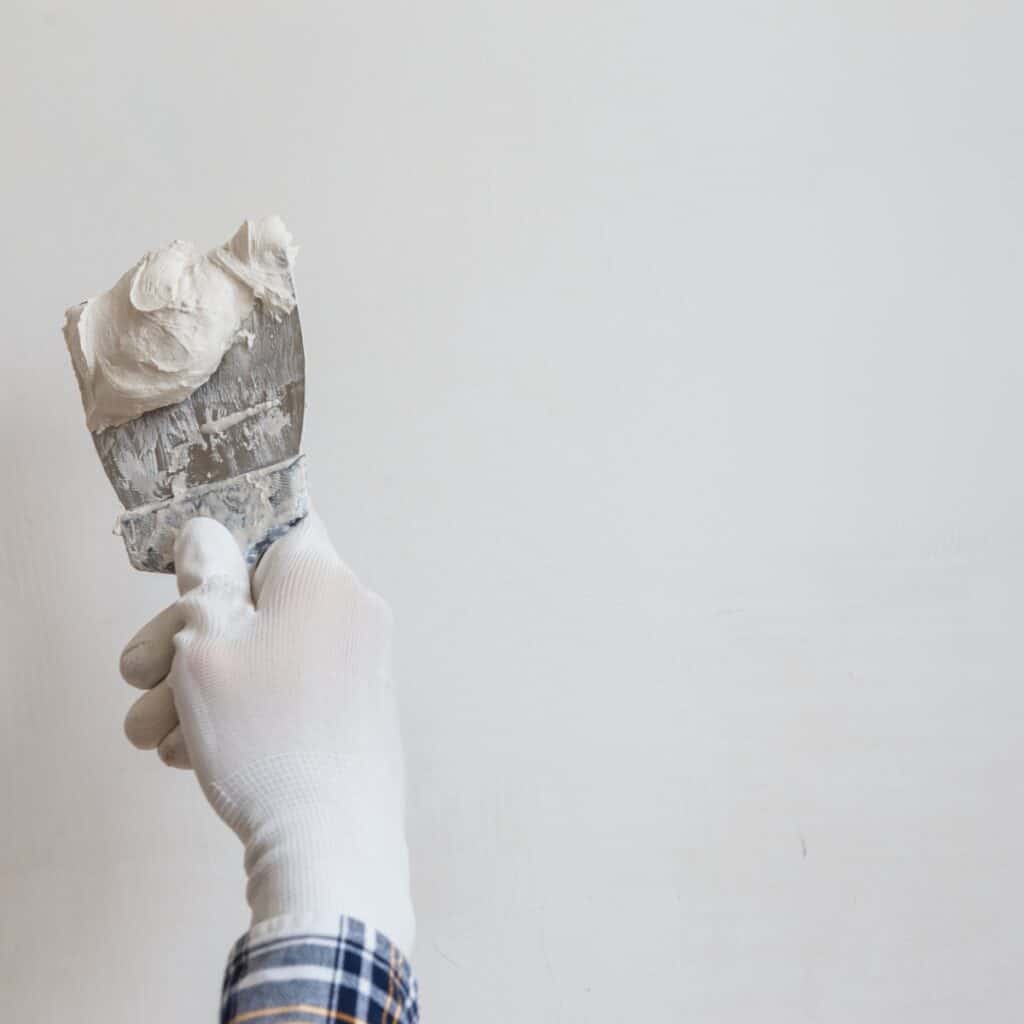Putty is a generic term for a material with high plasticity, similar in texture to clay or dough, typically used in domestic construction and repair as a sealant or filler.
Putty is a malleable material made from a mixture of clay, power, and water. It’s available in traditional and synthetic versions and is a great tool for home improvement projects.
In this article, I’ll discuss the uses of putty and provide tips on how to use it effectively.

In this post we'll cover:
Using Putty in Renovations: A Handy Guide
Putty is a versatile product that can be used in a variety of ways during renovations. It is a mixture of materials that typically includes clay, power, and water. Putty can be used to seal gaps, fill in holes, and smooth out surfaces. There are different types of putty available, including traditional and synthetic versions. In this section, we will discuss how to use putty in renovations.
Preparing the Area
Before using putty, it is important to prepare the area properly. This includes cleaning the surface and making sure it is completely dry. If the surface is not clean, the putty may not adhere properly. In the case of electrical outlets, make sure to turn off the power before replacing or repairing the outlet.
Mixing the Putty
To use putty, you will need to mix it first. The mixing process varies depending on the type of putty you are using. Here are some basic rules to follow:
- For white putty, mix it with water.
- For linseed putty, mix it with a little bit of boiled linseed oil.
- For epoxy putty, mix equal parts of the two components.
- For polyester putty, mix it with a hardener.
Types of Putty
There are many different types of putty available, each with its own set of functions and properties. Here are some of the most common types:
- Glazing putty: Used for sealing panes of glass into timber frames.
- Plumbing putty: Used for creating watertight seals around pipes and other fixtures.
- Wood putty: Used for filling in holes and gaps in wood.
- Electrical putty: Used for sealing electrical outlets and other fixtures.
- Synthetic putty: Made from synthetic materials and typically lower in weight than traditional putties.
The Different Types of Wall Putty Available in the Market
Acrylic wall putty is undoubtedly the most popular and widely used type of wall putty in the market. It is a water-based material that is easy to apply and requires low maintenance. Acrylic wall putty is suitable for both interior and exterior surfaces and provides a smooth finish to the walls. It is also known for its strong binding property, which makes it ideal for filling up cracks and damage on the wall. Acrylic wall putty is available in both wet and dry mixture forms, and it takes a quick time to set.
Cement Wall Putty
Cement wall putty is another popular type of wall putty that is widely used in the market. It is a mixture of cement and fine materials that are adjusted to create a smooth finish on the wall. Cement wall putty is meant for internal surfaces and is extremely strong and durable. It is ideal for surfaces that require extra maintenance and care. Cement wall putty is available in both wet and dry mixture forms, and it takes a longer time to set compared to acrylic wall putty.
Conclusion
So there you have it- all you need to know about putty. It’s a versatile product that you can use for a lot of things, from filling holes to glazing panes of glass and wood. You just need to know the right type for the job and you’re set. So go ahead and give it a try!
I'm Joost Nusselder, the founder of Tools Doctor, content marketer, and dad. I love trying out new equipment, and together with my team I've been creating in-depth blog articles since 2016 to help loyal readers with tools & crafting tips.
